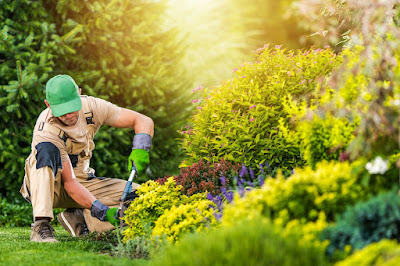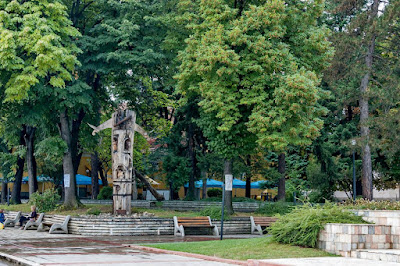Rochester's Neighborhoods: Green Spaces and Urban Development
Rochester, New York, has a mix of old and new neighborhoods. Each area tells its own story about the city's growth. This blog looks at how green spaces and urban growth work together in Rochester's different districts.
The Pattern of Rochester's Growth
Rochester grew out from its center like rings on a tree. The oldest parts sit near the Genesee River. Newer areas spread out toward the edges. This pattern shaped how neighborhoods look today.
The city grew fast after the Erie Canal opened in 1825. Many factory workers needed homes. This led to dense housing close to downtown. As cars became common in the 1900s, people moved farther out. This created the mix of urban and suburban areas seen today.
Downtown and Center City
Downtown Rochester sits where the city began. Old buildings stand next to new ones. High Falls and the Genesee River flow through this area, adding natural beauty to the urban core.
Recent years brought new life to downtown. Old factories changed into lofts and offices. The Genesee Riverway Trail gives people a place to walk, run, and bike along the water. This trail connects many parks and green spots downtown.
Manhattan Square Park offers green space for those who live and work downtown. In winter, its ice rink draws skaters. In summer, the park hosts concerts and events. This shows how urban parks serve many uses in city life.
The Southeast Neighborhoods
The Southeast Quadrant holds some of Rochester's most loved areas. Park Avenue, East Avenue, and the South Wedge mix homes, shops, and green spaces.
Highland Park stands out in this part of the city. This 150-acre park was made in 1888. It holds a famous lilac collection with over 1,200 bushes in 500 types. Each May, the Lilac Festival brings thousands to see these flowers in bloom.
The South Wedge has changed much in recent years. New shops and cafes opened. Old homes got fixed up. Mount Hope Cemetery, a green space in this area, holds the graves of Susan B. Anthony and Frederick Douglass. Its trees and paths make it both a history site and a natural park.
The Northeast Neighborhoods
Neighborhoods like Beechwood, Marketview Heights, and North Winton Village make up the Northeast. These areas mix old and new, with their own green spaces.
Seneca Park, made by famous park designer Frederick Law Olmsted, sits in this area. The park follows the Genesee River gorge. It holds the Seneca Park Zoo and miles of trails through woods and fields.
Urban farms have started in some Northeast areas. Groups like Greentopia work on vacant lots. They grow food and teach about plants. These small green spaces help feed people and bring neighbors together.
The Northwest Neighborhoods
The Northwest includes places like Maplewood, Edgerton, and Charlotte. Each area has its own feel and history.
Maplewood Park stretches along the Genesee River gorge. It has a rose garden with 300 types of roses. Paths lead down to the river and waterfalls below. The park links to the Genesee Riverway Trail, which runs through much of the city.
Charlotte sits where the Genesee River meets Lake Ontario. Ontario Beach Park gives people a place to swim, play, and relax by the water. The park's old carousel from 1905 still runs in summer months. This area feels like a beach town inside the city limits.
The Southwest Neighborhoods
The Southwest holds areas like the 19th Ward, Plymouth-Exchange, and Brooks Landing. These neighborhoods show how green projects can help city areas.
Genesee Valley Park, another Olmsted design, covers 800 acres in this area. The park has golf courses, sports fields, and places to canoe on the river. Paths connect it to the Erie Canal trail system and the University of Rochester campus.
The 19th Ward Community Garden shows how small green spaces help neighborhoods. People grow food and flowers on land that once sat empty. Such projects build community ties while making the area more green.
Green Space Planning and Urban Design
Rochester has a long history of planned green spaces. The city hired Frederick Law Olmsted in the 1880s to design its park system. His vision still shapes the city today.
The Olmsted parks form a green network across Rochester. These parks include Highland, Genesee Valley, Seneca, and Maplewood. Each one fits its surroundings while linking to the larger system.
Modern planning builds on this green legacy. The 2034 Comprehensive Plan for Rochester puts focus on parks, trails, and green streets. It aims to make sure all people can reach a park within a ten-minute walk from home.
Tree Cover and Urban Forests
Trees play a big role in Rochester's neighborhoods. They line streets, fill parks, and grow in yards. These trees clean the air, cool streets in summer, and make places more pleasant.
The city works to keep its tree cover thick and healthy. The urban forest provides shade and clean air for Rochester's residents through all seasons. The city's tree planting programs focus on areas that need more green..
In older parts of the city, large trees arch over streets. These green tunnels show decades of growth and care. In newer areas, young trees start the same process for future residents.
Community Gardens and Urban Farms
Rochester has seen growth in urban farming. Community gardens pop up in many neighborhoods. These small farms grow food where people live.
Projects like Flower City Farm and Rochester Roots teach farming skills. They help people grow their own food. Such programs feed people while building skills and community bonds.
These urban farms turn empty lots into green, useful spaces. They bring fresh food to areas that may lack grocery stores. The farms also create green jobs and teach young people about plants and nature.
Challenges and Solutions
Like most cities, Rochester faces challenges with its green spaces. Money for park upkeep can be tight. Some areas have fewer parks than others. Climate change brings new stresses to plants and trees.
Groups like the Friends of Washington Grove work to fix these issues. They plant native trees and remove invasive plants. Such groups help care for spaces the city might not have time or money to tend.
Green infrastructure offers ways to handle rain and snow. Rain gardens and special pavements let water soak into the ground. These features help stop flooding while making places more green.
The Future of Green Rochester
Plans for Rochester's future include more green spaces. New trails will connect existing parks. Vacant lots will become community gardens. Street trees will grow in areas that lack them now.
Projects like ROC the Riverway focus on the Genesee River. This plan will add parks and trails along the water. It aims to make the river a center of city life once more.
Climate plans call for more trees and plants throughout the city. These green additions will help cool Rochester as summers grow hotter. They will also make the city more pleasant for people who walk and bike.
Conclusion
Rochester's neighborhoods show how cities can mix built and natural spaces. From big parks to small gardens, green areas make the city better. They give people places to play, relax, and connect with nature.
The mix of old and new, urban and green makes Rochester special. As the city grows and changes, its green spaces will keep playing a key role. They link the city's past to its future while making life better for those who live there today.


